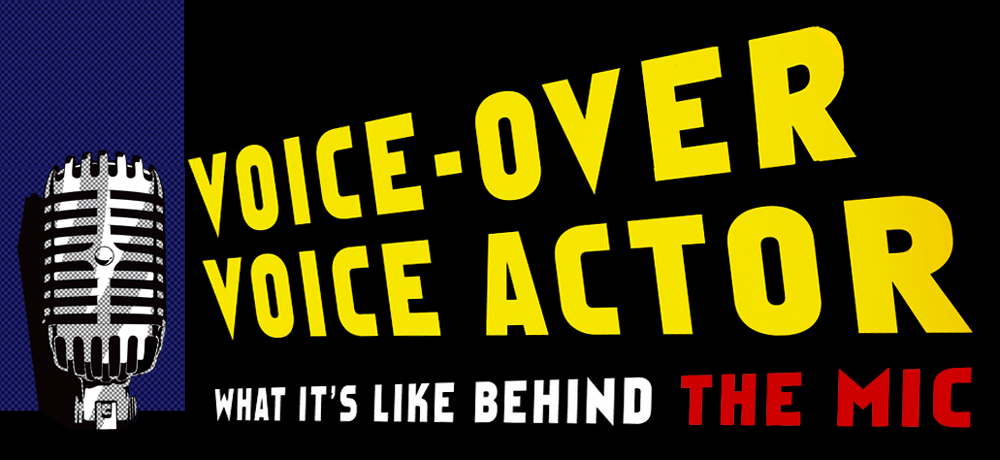A great review for our book! Voice Over Voice Actor: What It's Like Behind the Mic
From: PlaybackSTL.com:
Yuri Lowenthal and Tara Platt/ Voice Over Voice Actor: What It's Like Behind the Mic
Even if you have no aspirations towards a career in voice-over, there’s a lot you can learn from this book.
256 pages. Emerald Book Company, 2010. $19.95 (paperback)
Everyone knows about the kind of acting where you actually see people doing stuff: Hilary Swank doggedly pursuing evidence to free her brother from jail or Jeremy Renner disabling IEDs in Iraq. But there’s a whole other world of acting out there where the actor’s only tool is his/her voice. Not surprisingly this is called voice-over, and once you become aware of it, you will notice it everywhere: not only on the radio but also in commercials, live and animated film, television programs, video games, and recorded announcements. Basically, if you hear a voice and can’t see the person who is speaking, that’s voice-over.
 Voice-Over Voice Actor: What It’s Like Behind the Mic, written by industry professionals Yuri Lowenthal and Tara Platt, provides an insiders’ view of the business of voice-over acting with a particular focus on actors who want to break into this market. Between them they have over 12 years of voice-over experience with clients including Disney, Nickelodeon, Cartoon Network, Dell, Coke and Subaru. Yuri is, among other things, the voice of the Prince of Persia in the video game series of the same name, Superman and Superman X on Legion of Superheroes, Ben Tennyson on Ben 10: Alien Force and Jinro/Kuma on Afro Samurai while Tara’s roles include Temari in Naruto (series and video games), Wonder Woman in DC vs. MK and Dream Girl in Legion of Superheroes.
Voice-Over Voice Actor: What It’s Like Behind the Mic, written by industry professionals Yuri Lowenthal and Tara Platt, provides an insiders’ view of the business of voice-over acting with a particular focus on actors who want to break into this market. Between them they have over 12 years of voice-over experience with clients including Disney, Nickelodeon, Cartoon Network, Dell, Coke and Subaru. Yuri is, among other things, the voice of the Prince of Persia in the video game series of the same name, Superman and Superman X on Legion of Superheroes, Ben Tennyson on Ben 10: Alien Force and Jinro/Kuma on Afro Samurai while Tara’s roles include Temari in Naruto (series and video games), Wonder Woman in DC vs. MK and Dream Girl in Legion of Superheroes.They take a systematic approach to their topic, beginning with a description of the industry then moving through the practical processes of finding your voice, auditioning, creating a demo, building a home recording booth, marketing yourself, and actually doing the work. What I like best about this book is the informal yet business-like tone taken by the authors: they don’t offer shortcuts or “secrets to success” but point the way down a path which can lead to a rewarding career. And they’re not afraid to have some fun in the process: anecdotes, cartoons and fun facts are salted throughout the text, along with sidebars from other industry professionals which offer advice, war stories and other information about working in the voice-over business.
If you think you know something about voice acting (and even more so if you think it’s easier or somehow a lesser skill in comparison to conventional acting) I invite you to listen to the demo reels of Yuri (http://www.yurilowenthal.com/page4.html) and Tara (http://www.taraplatt.com/vo.html). Pretty amazing, huh? Not only do these demo reels demonstrate the versatility of these two actors, they also provide examples of how to assemble clips to showcase your talents briefly and effectively.
Even if you have no aspirations towards a career in voice-over, there’s a lot you can learn from this book. For instance, understanding the process by which anime dubs are created goes a long way toward explaining why you’re usually better off listening to the original soundtrack with subtitles. When animated films are first made, the dialogue is recorded and the animation is made to match the voices. Creating a dub reverses the process: the voice-over actor has to create a convincing performance while trying to match the mouth movements (flaps) of an animated character (who is “speaking” in a different language) while alone in the studio (generally each character is recorded separately) and working with little chunks (loops) of dialogue. That’s a tough gig any way you look at it.
You can learn more about Voice-Over Voice Actor from the book’s web site (http://voiceovervoiceactor.com/) which also offers bonus materials like exercises to improve your skills. You can also purchase the book from this web site and from online sources such as amazon.com. | Sarah Boslaugh
Go to PlaybackSTL
